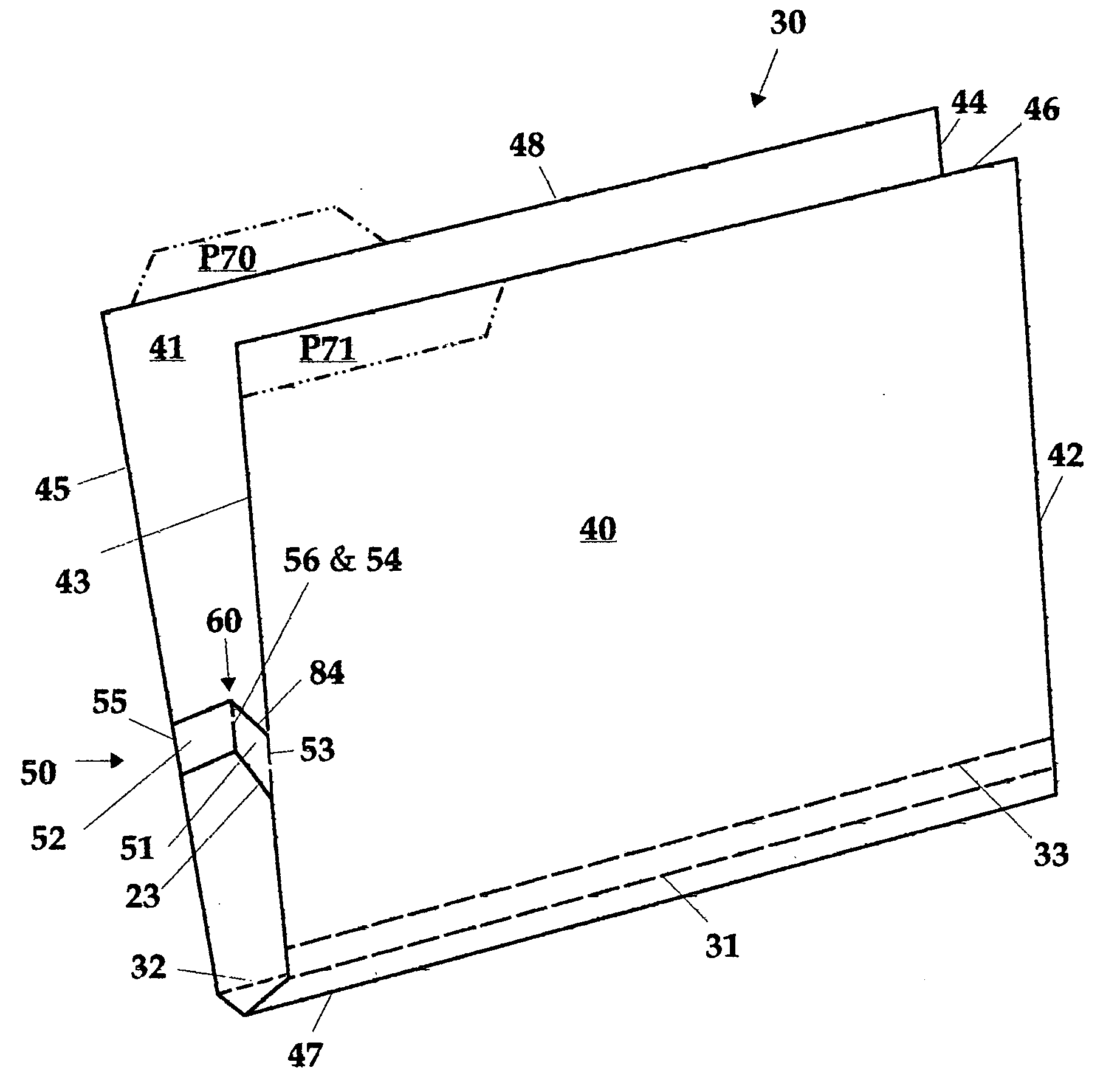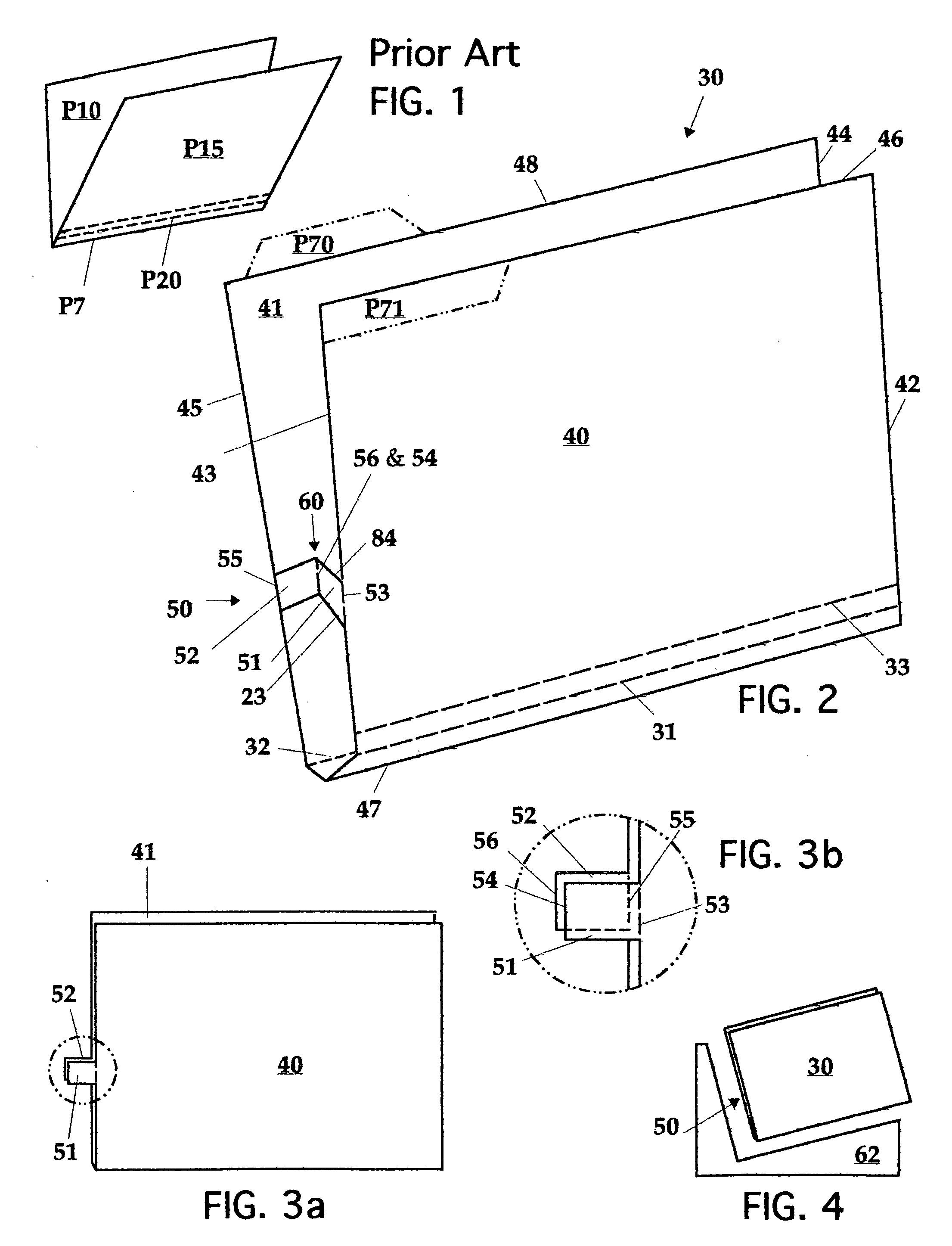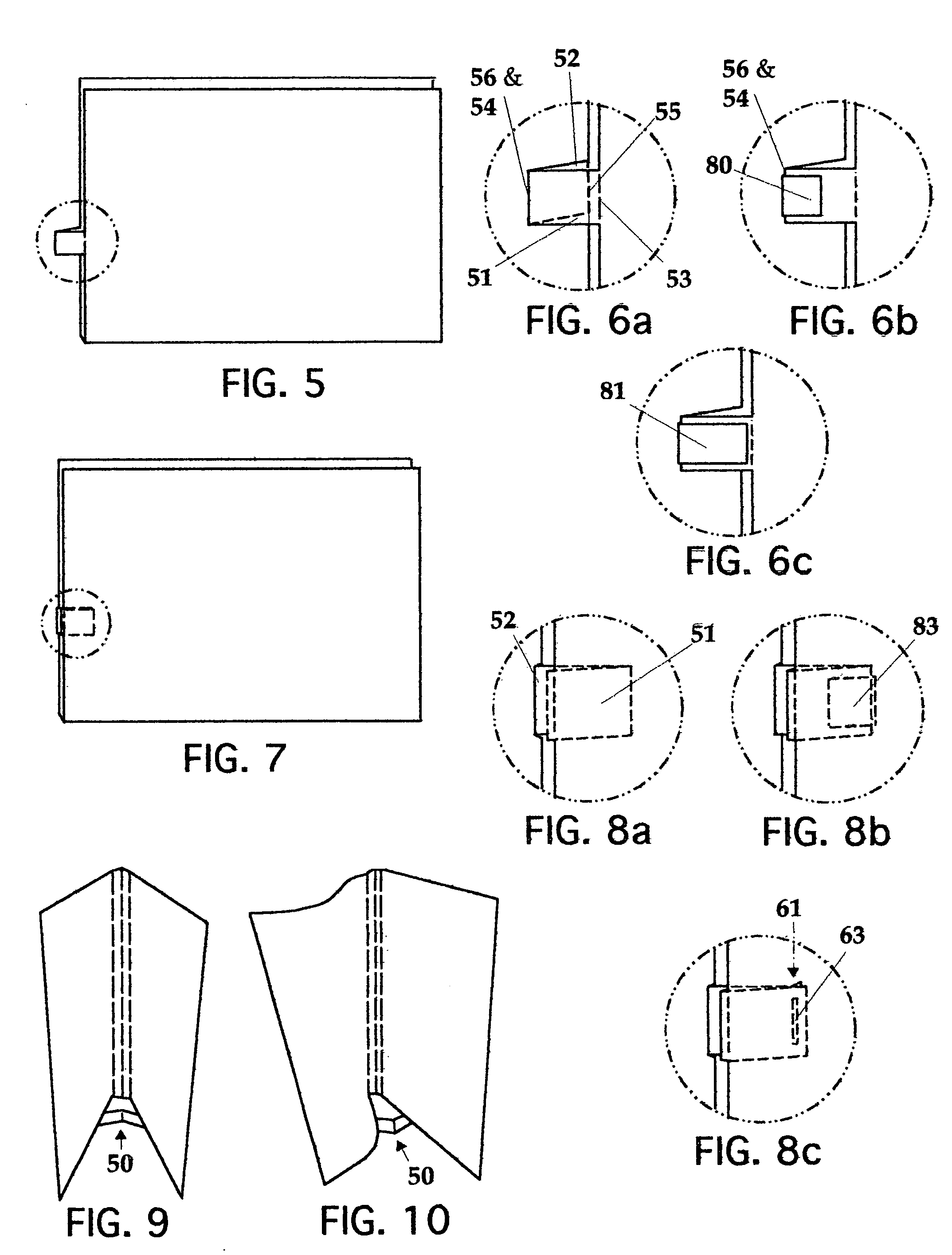Folder with a side hinge
- Summary
- Abstract
- Description
- Claims
- Application Information
AI Technical Summary
Benefits of technology
Problems solved by technology
Method used
Image
Examples
Embodiment Construction
1. Description of One Embodiment of the Invention
[0047]FIG. 2 shows an embodiment of the invention or folder 30, LHS front perspective view. This folder has a front panel 40, and a back panel 41. Each panel has opposite-side top and bottom edges. The front panel has top edge 46. The back panel has top edge 48. Front and back panel bottom edges are substantially horizontal and are hingedly attached along bottom edge 47. The front panel has right-hand-side edge 42 and left-hand side edge 43. The back panel has right-hand-side edge 44 and left-hand side edge 45. Side edges 43 and 45 are substantially perpendicular to said bottom edge 47, and they are substantially vertical. In this embodiment, side edges 42 and 44 are also substantially perpendicular to said top and said bottom edges. [Multiple prior art bottom edge fold lines are shown in this embodiment. Shown are front panel slightly-folded fold line 31, front panel fold line / scoring 33, and back panel slightly-folded fold line 32...
PUM
 Login to View More
Login to View More Abstract
Description
Claims
Application Information
 Login to View More
Login to View More - Generate Ideas
- Intellectual Property
- Life Sciences
- Materials
- Tech Scout
- Unparalleled Data Quality
- Higher Quality Content
- 60% Fewer Hallucinations
Browse by: Latest US Patents, China's latest patents, Technical Efficacy Thesaurus, Application Domain, Technology Topic, Popular Technical Reports.
© 2025 PatSnap. All rights reserved.Legal|Privacy policy|Modern Slavery Act Transparency Statement|Sitemap|About US| Contact US: help@patsnap.com



